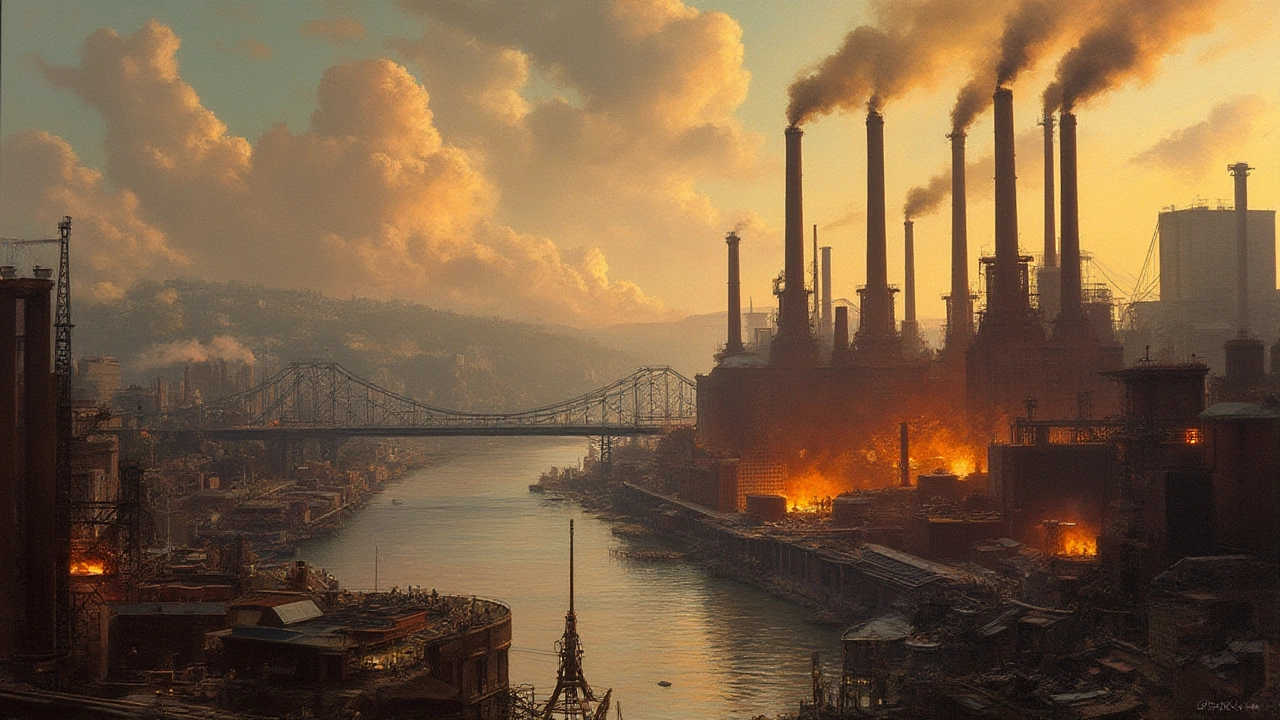- Why IKEA Chose India: Unpacking the Swedish Giant's Expansion Strategy Jul 9, 2025
- Top Small Scale Manufacturing Business Trends in 2024 Dec 4, 2024
- Top Electronics That Are Shaping India's Market Nov 25, 2024
- Which Manufacturing Sector Is the Most Profitable in 2025? Oct 26, 2025
- Why Are Drugs Cheaper in India? Pharma Manufacturing Secrets Uncovered Jun 15, 2025
American Steel Industry: Key Players, Production Hubs, and Future Trends
Ever wondered why the United States still matters in global steel? In 2024 the country produced over 80 million metric tons, enough to build a skyscraper every day. That volume powers everything from cars to bridges, and it creates thousands of well‑paid jobs. If you’re curious about who’s behind those numbers, where the steel actually rolls out, and what’s next for the sector, you’re in the right place.
Major Steel Producers in the US
The biggest name on the market is Nucor. With more than 20 plants spread across the country, Nucor tops the list for output and for adopting electric‑arc furnace technology that cuts emissions. Close behind is United States Steel (U.S. Steel), a historic player that still runs massive integrated mills in Pennsylvania and Ohio. ArcelorMittal, though owned by a European parent, runs one of the largest U.S. operations at the Gary, Indiana plant. These firms dominate the "biggest steel supplier in the US" space, offering a mix of flat‑rolled, structural, and specialty products.
What sets them apart isn’t just size. Nucor’s lean management style, U.S. Steel’s focus on high‑strength alloys, and ArcelorMittal’s global supply network each give customers different benefits. If you’re sourcing steel, ask about the company’s production method, its sustainability goals, and how quickly it can ship to your factory.
Top Steel Production Cities
When you think of American steel, Pittsburgh probably pops into your mind. Known as "Steel City," it still hosts several key facilities that feed the Midwest and East Coast. But the spotlight isn’t limited to Pennsylvania. Cities like Gary, Indiana; Cleveland, Ohio; and Birmingham, Alabama all rank high in output. Each region benefits from local raw material access and a skilled workforce that’s been honed over generations.
Why does geography matter? Proximity to raw iron ore, coal, and transportation hubs lowers costs and shortens delivery times. For example, a plant near the Great Lakes can ship finished coils by barge directly to Great Lakes manufacturers, cutting freight expenses dramatically.
Beyond jobs, the steel sector fuels innovation. Automation, AI‑driven quality control, and low‑carbon steelmaking are reshaping the industry. The 2025 "How Manufacturing Helps American Society" report highlights that steel jobs now often require tech skills—think data analysis alongside welding.
Looking ahead, the American steel industry faces three big challenges: rising energy costs, competition from imported high‑grade steel, and pressure to decarbonize. Companies are responding with electric‑arc furnaces powered by renewable energy, recycling more scrap metal, and investing in carbon‑capture pilots. If those trends hold, the sector could stay competitive while cutting its carbon footprint.
So whether you’re a supplier, a manufacturer, or just a curious reader, the takeaways are simple: the U.S. still hosts powerful steel producers, the heartland cities remain crucial hubs, and the future will be driven by technology and sustainability. Keep an eye on the major players, watch the production hot‑spots, and you’ll understand how steel keeps America moving forward.
Pittsburgh: The Steel Making Capital of the US – History, Facts & Impact
- Aarav Sekhar
- Jul 14, 2025
Discover why Pittsburgh holds the title of the steel capital of the US. Explore its rise, industry secrets, and what the city’s legacy means now.
